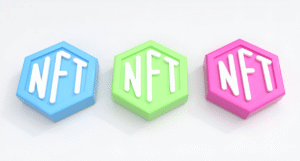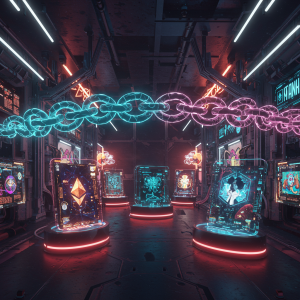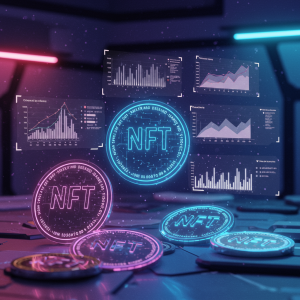Architecting Resilient Frameworks for Collaborative Content, Brand Franchising & AI-Assisted Creation

The digital landscape demands robust architectural foundations that can withstand rapid technological shifts while enabling seamless collaboration across teams and platforms. Modern businesses require frameworks that not only support current operations but anticipate future challenges in content creation and brand expansion.
Building these resilient systems involves understanding the intricate relationships between human creativity, technological capabilities, and market demands. The most successful organizations today recognize that sustainable growth comes from establishing adaptable structures rather than rigid processes.
Understanding Framework Resilience in Modern Business
Resilient frameworks share common characteristics that distinguish them from traditional business models. They emphasize flexibility without sacrificing core stability, enabling organizations to pivot quickly when market conditions change.
These systems incorporate multiple feedback loops that continuously assess performance and identify areas for improvement. Rather than waiting for annual reviews or major overhauls, resilient frameworks adapt incrementally through ongoing optimization.
The foundation of any resilient framework rests on clear communication protocols and shared understanding among all stakeholders. When team members understand their roles within the larger system, collaboration becomes more natural and efficient.
Collaborative Content Creation Strategies
Modern content creation transcends individual effort, requiring orchestrated collaboration between diverse skill sets and perspectives. Successful teams establish clear workflows that accommodate different working styles while maintaining consistent output quality.
The most effective collaborative environments provide multiple touchpoints for feedback and revision without creating bottlenecks. Team members can contribute their expertise at appropriate stages while maintaining the overall project momentum.
Technology plays a crucial role in facilitating smooth collaboration, but the human element remains paramount. The best frameworks recognize that tools should enhance human creativity rather than constrain it.
Cross-functional teams bring unique advantages to content creation, combining marketing insights with technical expertise and creative vision. When properly structured, these diverse perspectives create richer, more engaging content that resonates with broader audiences.
Brand Franchising Architecture
Brand franchising requires careful balance between maintaining core identity and allowing local adaptation. Successful franchise systems provide clear guidelines while preserving space for regional customization that reflects local market preferences.
The architectural approach to franchising involves creating modular brand elements that can be combined in various ways without diluting the central message. This modularity enables consistency across locations while supporting individual franchise success.
Documentation becomes critical in franchise systems, as brand standards must be clearly communicated and easily implemented by diverse operators. The framework should simplify complex brand guidelines into actionable steps.
Quality control mechanisms within franchise architectures monitor brand consistency without stifling innovation. The best systems encourage franchisees to contribute ideas that can benefit the entire network while maintaining core brand integrity.
AI-Assisted Creation Integration
Artificial intelligence transforms content creation by handling routine tasks and augmenting human creativity in unprecedented ways. The key lies in identifying which processes benefit from automation while preserving human judgment for strategic decisions.
AI tools excel at generating initial drafts, conducting research, and optimizing content for specific audiences or platforms. However, the creative vision and strategic direction still require human insight and experience.
Integration challenges arise when teams struggle to adapt existing workflows to incorporate AI capabilities. Successful implementations introduce AI gradually, allowing team members to develop comfort and expertise with new tools.
The most effective AI-assisted frameworks maintain clear boundaries between automated processes and human oversight. This approach ensures quality control while maximizing efficiency gains from technological assistance.
For businesses looking to implement comprehensive digital strategies, platforms like NFT Marketo provide valuable resources and insights for navigating modern marketing challenges.
Building Adaptive Systems
Adaptive systems anticipate change rather than simply reacting to it. They incorporate monitoring mechanisms that identify emerging trends and potential disruptions before they impact operations significantly.
These systems design flexibility into their core architecture, enabling rapid response to new opportunities or challenges. Rather than requiring complete system overhauls, adaptive frameworks allow for incremental modifications that maintain operational continuity.
Documentation and knowledge management become essential components of adaptive systems. Teams must capture institutional knowledge and best practices in formats that facilitate quick access and application during periods of change.
Implementation Considerations
Successful framework implementation requires careful attention to organizational culture and existing processes. The most elegant architectural designs fail when they clash with established team dynamics or operational realities.
Change management becomes crucial during implementation phases, as team members need time and support to adapt to new workflows and technologies. Gradual rollouts often prove more successful than comprehensive system replacements.
Training programs should accompany framework implementations, ensuring all team members understand their roles within the new system. Ongoing support helps maintain momentum and addresses challenges as they arise.
Regular assessment intervals help identify areas where frameworks may need adjustment or enhancement. These reviews should examine both quantitative performance metrics and qualitative feedback from system users.
Measuring Framework Success
Effective measurement systems track multiple dimensions of framework performance, including efficiency gains, quality improvements, and team satisfaction. Single metrics rarely capture the full impact of comprehensive architectural changes.
Leading indicators help predict future performance trends, while lagging indicators confirm whether implemented changes achieve desired outcomes. The best measurement systems combine both types of metrics for comprehensive assessment.
User feedback provides essential insights into framework effectiveness from the perspective of those working within the system daily. Regular surveys and informal check-ins reveal pain points that may not appear in quantitative data.
Long-term success metrics should align with broader organizational goals, ensuring that framework improvements contribute meaningfully to overall business objectives rather than optimizing isolated processes.
Future-Proofing Strategies
Future-proofing requires balancing current needs with anticipated developments in technology and market conditions. The most resilient frameworks incorporate flexibility that accommodates unforeseen changes without requiring fundamental restructuring.
Continuous learning becomes embedded in future-proof systems, encouraging team members to develop new skills and explore emerging technologies. This ongoing development ensures the organization maintains competitive advantages as industries evolve.
Strategic partnerships can enhance framework resilience by providing access to specialized expertise and resources during periods of rapid change. These relationships should complement internal capabilities rather than creating dependencies.
Investment in emerging technologies should follow strategic frameworks that evaluate potential impact against implementation costs and organizational readiness. Early adoption provides advantages, but premature implementation can create unnecessary complications.
The architectural approach to building resilient frameworks requires ongoing commitment to adaptation and improvement. Organizations that embrace this mindset position themselves for sustained success in increasingly dynamic business environments.








